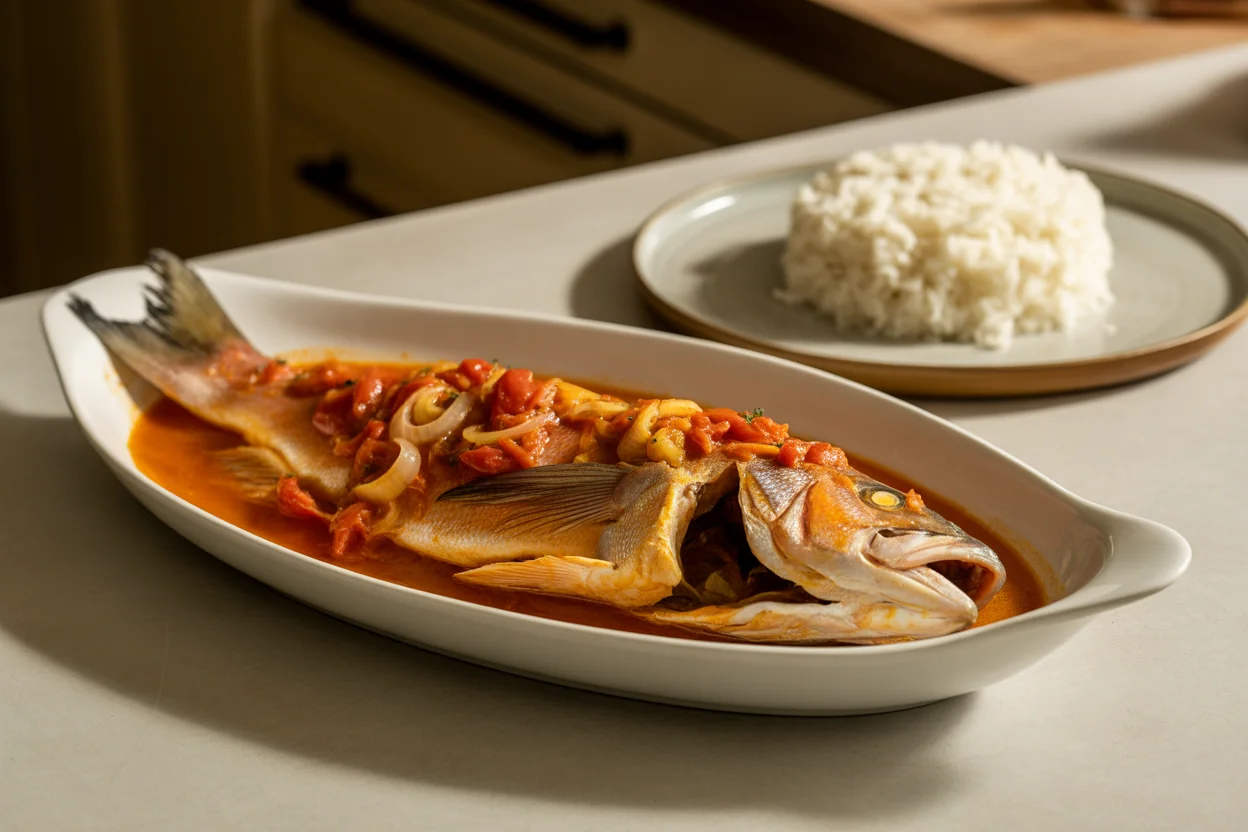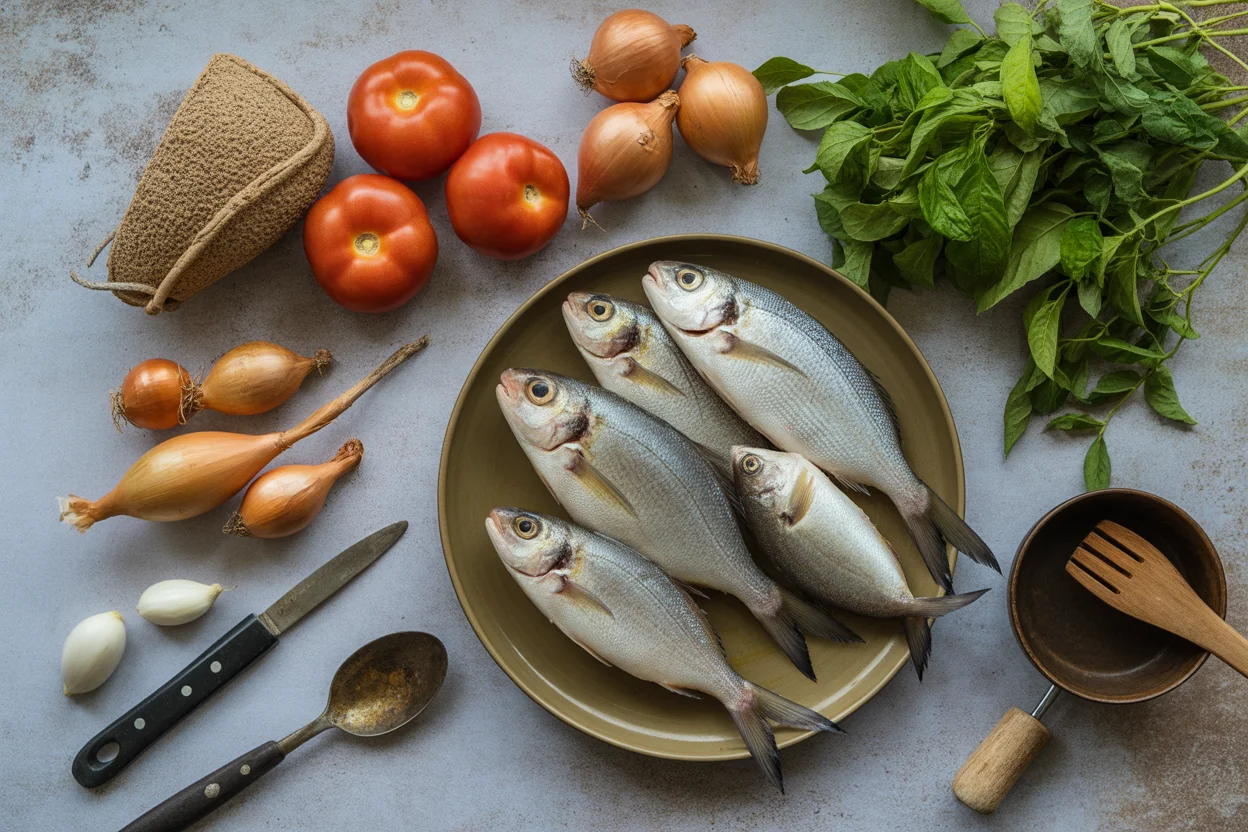- What is pinangat na isda?
- Choosing fresh fish
- Preparing broth
- Simmering fish
- Adding vegetables
- Serving with rice
- Healthy benefits
- Common Questions
- Give pinangat na isda a shot—even just once!
Filipino pinangat na isda used to totally confuse me as a kid. Like, why was fish floating in a tangy soup with veggies—and why did it taste way better than it looked? If you’ve ever wanted something that isn’t fried or grilled for dinner but still makes you (and all the picky eaters at home) happy, this one’s your fix. Trust me, it’s easy, homey, and secretly healthy. Even my cousin, who lives off grilled pork BBQ and can barely boil water, figured out how to make it. If you’re into classic Filipino comfort food like garlic sinangag or want lighter meals that don’t clog up your arteries, you’re in for a treat.

What is pinangat na isda?
Let’s get the basics out of the way first. Pinangat na isda is a Filipino fish dish where fish simmers gently in a broth of tomatoes, spices, and (the crux!) a bit of sourness from tamarind or sometimes calamansi. If you don’t like tangy stuff—this’ll probably prove you wrong. For me, it’s the ultimate rainy day meal, super flexible and forgiving. Some folks use bangus (milkfish), others tilapia, even galunggong if you’re feeling extra budget-friendly. They don’t teach this in schools, but ask any Pinoy family and it’s a top-10 comfort recipe. It always reminds me of slow Sundays, slippers half off my feet, and my lola shouting not to let the fish break apart (oops).
Each family’s got their tweaks, right? Mom swears by adding green chili for a petty little kick. Some add mustasa leaves (mustard greens) or eggplant to bulk things up. The flavor is unlike anything else because of the tamarind and tomato duet, hitting you with sweet, sour, and a little salty wave. Perfect with a pile of steaming white rice that soaks up all that soup.
And don’t sweat it if it looks watery or too plain at first. The magic is in how those few ingredients come together and turn into something that—honestly—tastes like five-star restaurant stuff (but with no tablecloth required).
“I always thought pinangat na isda was too simple to impress, but my friends still talk about it whenever they come over. Seriously, it’s the dish everyone secretly wants seconds of!” – Liza R., Laguna

Choosing fresh fish
Okay, listen up here—a lot of the dish’s yumminess depends on your fish. I say just go for what looks fresh and shiny at the wet market (or the fish counter if you’re abroad). Bangus is classic. Tilapia works too. Some bold folks even use pompano, and wow, talk about level up! Never pick something with dull eyes or weird fishy smell. Fish should look alive even when it’s, well, not.
Trust me, if you pick old fish, the whole pot’s going to taste like regret. My go-to move is to press the flesh and check if it springs back. If you’re at an Asian grocery, sometimes they’ll even scale and clean it for you (blessing, right?).
There’s no need to marinate or do anything complicated. Just a quick rinse, trim off fins if they look scary, and let’s move on. By the way, I once tried making this with frozen fillets out of desperation—not recommended (unless you enjoy mushy fish soup).

Preparing broth
This is where pinangat na isda gets its heartbeat. Get your pot and dump in a couple of sliced tomatoes (the riper, the better; sometimes I even add an extra just for good luck). Onions too. Water comes next—enough to cover the fish when it’s time for their swim. For the sourness, I use tamarind soup mix or real tamarind pulp if I’m feeling patient (which, honestly, is rare). Calamansi is a good backup if you can’t find tamarind, but don’t go overboard or it’ll turn into straight lemonade.
A touch of salt. Some cracked pepper. I toss in a green finger chili if I want a mild spark. The broth starts slightly pale but trust me it turns pretty when the fish goes in. No need to boil the soup for hours; the point is to keep it light but flavor-packed. I’ve seen folks toss in ginger or lemongrass and it’s actually not too shabby—do your thing!
And, honest truth, if you want this even cozier, throw in a piece of eggplant. Let it sop up the broth. Your future self will thank you.
Simmering fish
This part takes nerves. Lay your fish gently into the bubbling tomatoes and broth. Don’t just dump it in or the whole thing will flake apart before you can get a good serving out. Pro tip: lower the heat a bit; a furious boil breaks the fish, which is NOT what we want.
Let it simmer quietly. Ten to fifteen minutes tops for most fish. Flip once if it’s chunky, but only if you’re careful. Watch the color change—when it turns opaque and the broth kind of hugs the pieces, you know you’re there. I always check the thickest part real quick with a fork. If it flakes, you’re golden. The smell alone will make everyone float to the kitchen.
My lola would hover and threaten to do it herself if she saw me jabbing at the fish too rough. “Delicado, baka madurog!” So, yeah, treat it like you would a newborn baby—gentle as can be.
Adding vegetables
Veggies are the twist that make pinangat na isda shine. Tomatoes and onions are non-negotiable. Eggplant and mustard greens? Optional, but I beg you, try them. Like, even once. Mustard greens cut down the tang with a fresh, leafy vibe, and eggplant turns silky-soft in the hot soup. Sometimes I sneak in okra because I like the extra goo (kids hate it, grown-ups secretly love it).
Timing is everything—add these in the last ten minutes so they don’t turn mushy. You want bite, not baby food. If you’re low on budget or fridge space, just slide in whatever leafy green you’ve got. Don’t fuss. The soup forgives.
The entire combo turns the dish from just a “fish dish” into a hearty home meal. The stuff you imagine eating on a stormy night, or after a long day out. That smell drifting around the house pretty much guarantees nobody’s skipping dinner (and if they are, hey, more for you).
Serving with rice
Time for the best part—eating this with a mountain of hot, fluffy rice. Pinangat na isda literally begs for rice. Let the soup dribble all over and soak in. There’s just something about the mix of tangy broth and sticky grains, seriously hypnotizing.
I love running the fork through everything. Sometimes throw on a sprinkle of fried garlic (leftover from sinangag). Someone in your house will come running from random corners when they smell this—guaranteed. If you want to be extra, serve it with Filipino tinola with spinach chicken or even pair with smoky tinapa fried rice for a double whammy Pinoy meal.
Here’s what I like for sides:
- Extra finger chilies on the side for anyone who wants big heat.
- Sliced calamansi so hardcore folks can add more sourness (whew).
- Shallow bowl to make sure nobody loses a single drop of broth.
That’s it—it’s not a fancy meal but, wow, does it hit the nostalgia button pretty hard.
Healthy benefits
Alright, for all the diet watchers, here’s the big reveal—pinangat na isda is like health wrapped in flavor. You get protein from the fish, vitamins from the veggies, and not a bucket of oil in sight. Unlike fried stuff, it’s light on the tummy but somehow still super satisfying.
The tamarind actually has antioxidants (yes, for real) and tomatoes add a hit of lycopene. I once calculated the calories (don’t laugh) on a boring afternoon, and realized this could fit any “healthy Filipino recipes” roundup. Less grease, way less salt than usual restaurant food, and you control everything going in. It’s the kind of food doctors brag about, not that you need their approval to enjoy it.
Seriously, for a meal that tastes classic and makes you feel good after, it checks all the boxes. Not many dishes can say that.
Common Questions
Can I use any fish for pinangat na isda?
Pretty much! Bangus, tilapia, pompano, or galunggong work well. Just avoid anything too bony or delicate.
What can I use if I don’t have fresh tamarind?
No sweat. Use tamarind powder, a few squeezes of calamansi, or even a bit of lemon juice. Adjust to your sourness liking.
Can this be made ahead of time?
Absolutely! It actually tastes richer the next day, but the fish will be softer. Heat gently, don’t boil again or you’ll have fish flakes instead of chunks.
Why did my fish break apart?
Probably from stirring or too much boiling. Simmer GENTLY. Lay off the mixing and let the fish do its thing.
Is there a way to make it spicier?
Toss in extra green chilies or shake on some chili flakes at the end. Be careful, though, that stuff sneaks up.
Give pinangat na isda a shot—even just once!
If you’re on the fence about Filipino pinangat na isda, just remember there’s nothing trying to look fancy here, but the taste will make even the food snobs in your life happy (yes, I mean my brother-in-law). You don’t need special equipment, and no fancy cuts of fish. It’s the sort of recipe that just works, whether you want lighter weekday eats or a cozy weekend family meal.
If you want to experiment further, check out more inspiration like Pinangat na Pompano – Kawaling Pinoy for a little upgrade, or read Pinangat na Isda Recipe if you want step-by-steps with alternatives. The full story—seriously, it’s older than most of us—can be found at Pinangat na isda – Wikipedia. There are so many classic ideas worth tweaking, sharing, and tasting for yourself.
Get cooking, make your own rules, and let your kitchen smell like pure Pinoy comfort!

Pinangat na Isda
Ingredients
For the broth
- 2 medium Tomatoes, sliced Riper tomatoes yield better flavor.
- 1 medium Onion, sliced
- 4 cups Water Enough to cover the fish.
- 1 pack Tamarind soup mix or fresh tamarind Calamansi can be used as an alternative.
- 1 to taste Salt
- 1 to taste Cracked pepper
- 1 piece Green finger chili Optional.
For the fish and vegetables
- 1 kg Fish (bangus, tilapia, pompano, or galunggong) Choose fresh fish for the best flavor.
- 1 medium Eggplant, optional Adds richness to the broth.
- 1 cup Mustard greens, optional Helps balance the tangy flavor.
- 1 to taste Okra, optional Adds extra texture.
Instructions
Preparation
- Choose fresh fish; avoid those with dull eyes or strong fishy smell.
- Rinse the fish and trim off any fins.
- Prepare the broth by adding sliced tomatoes, onions, and water to the pot.
Cooking
- Bring the broth to a simmer and add tamarind, salt, cracked pepper, and green finger chili.
- Gently place the fish into the boiling broth and simmer for 10-15 minutes until cooked through.
- Add optional vegetables like eggplant and mustard greens in the last 10 minutes to avoid mushiness.
Serving
- Serve hot with steamed rice and optional fried garlic on top.
- Add extra finger chilies and sliced calamansi on the side for those who want more heat or sourness.

